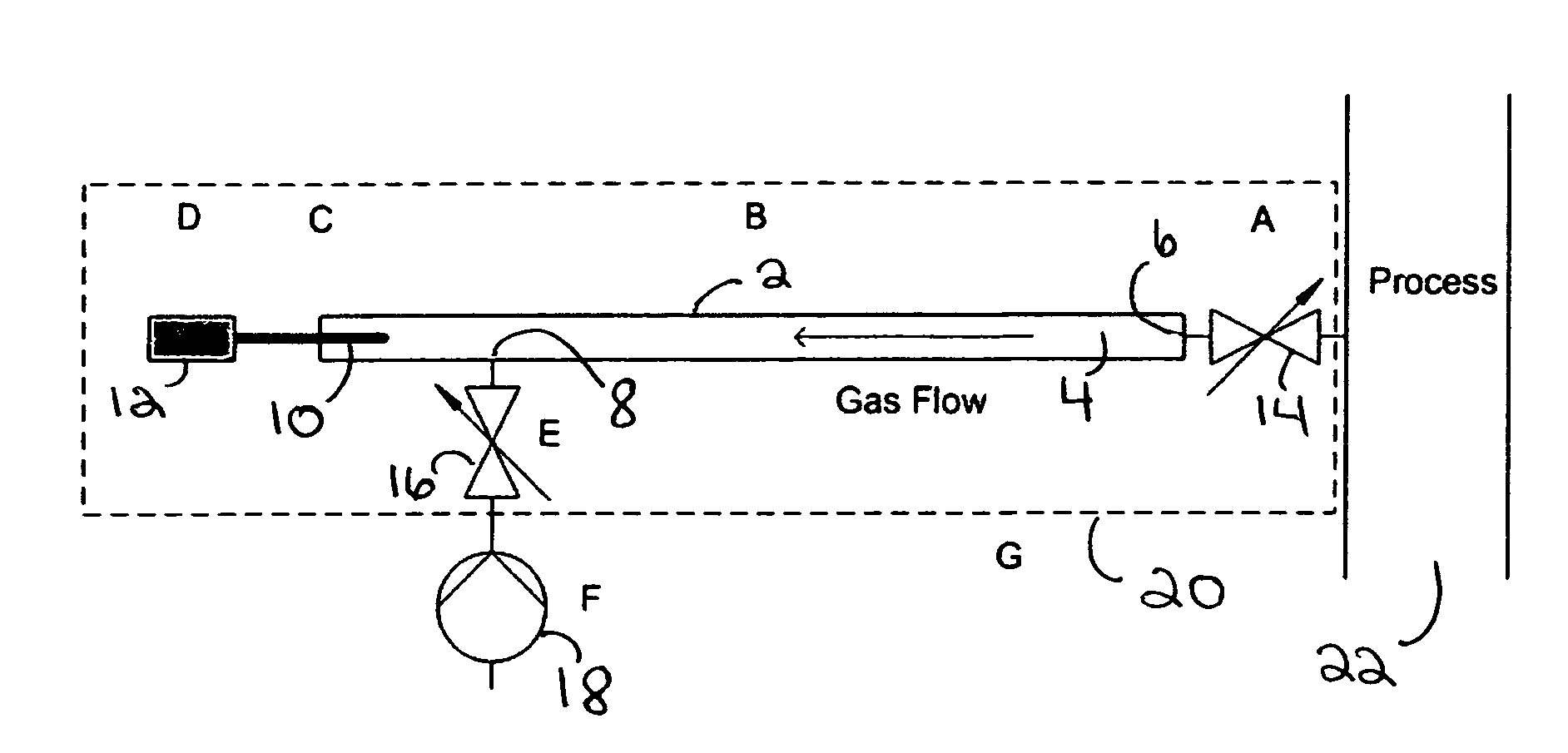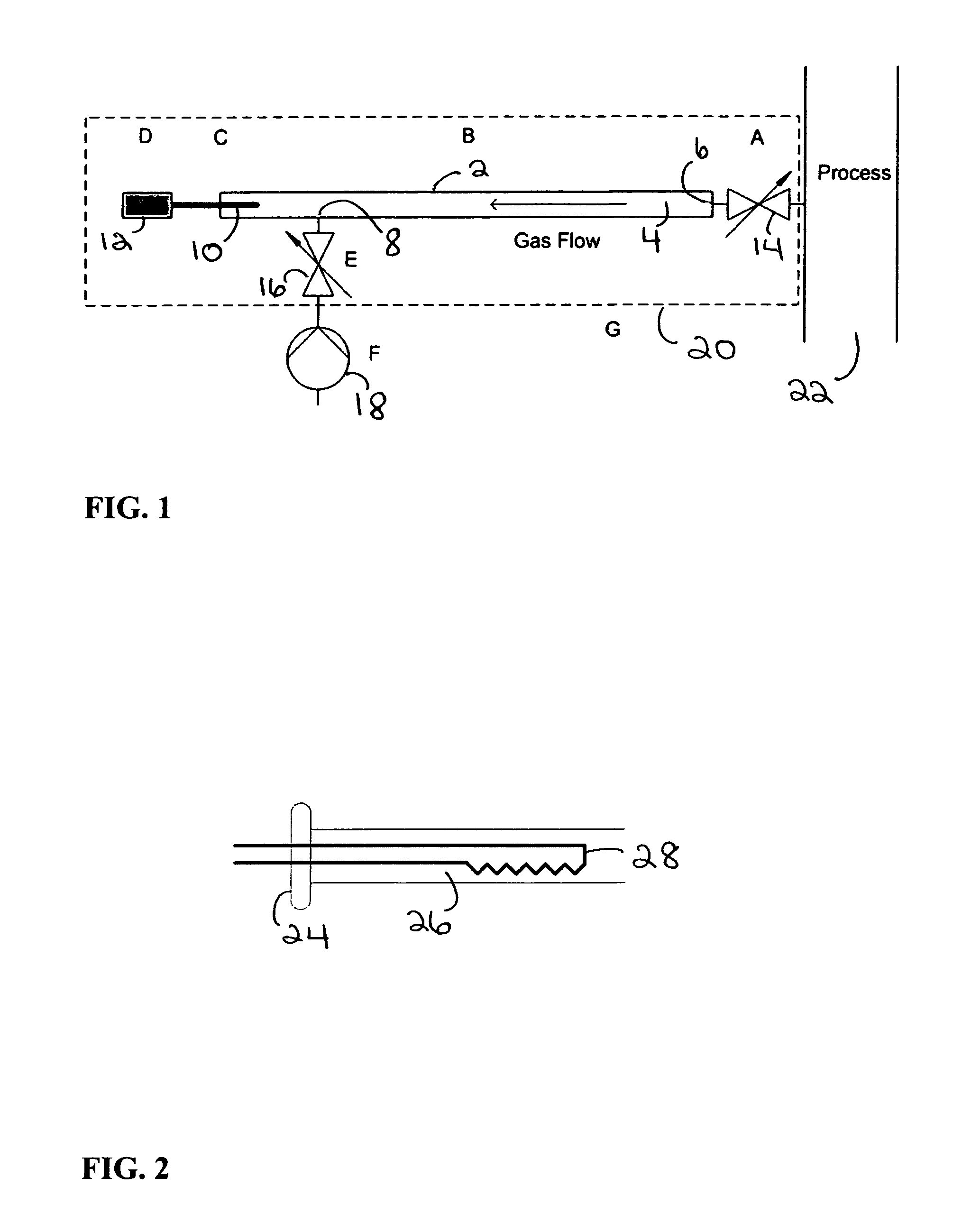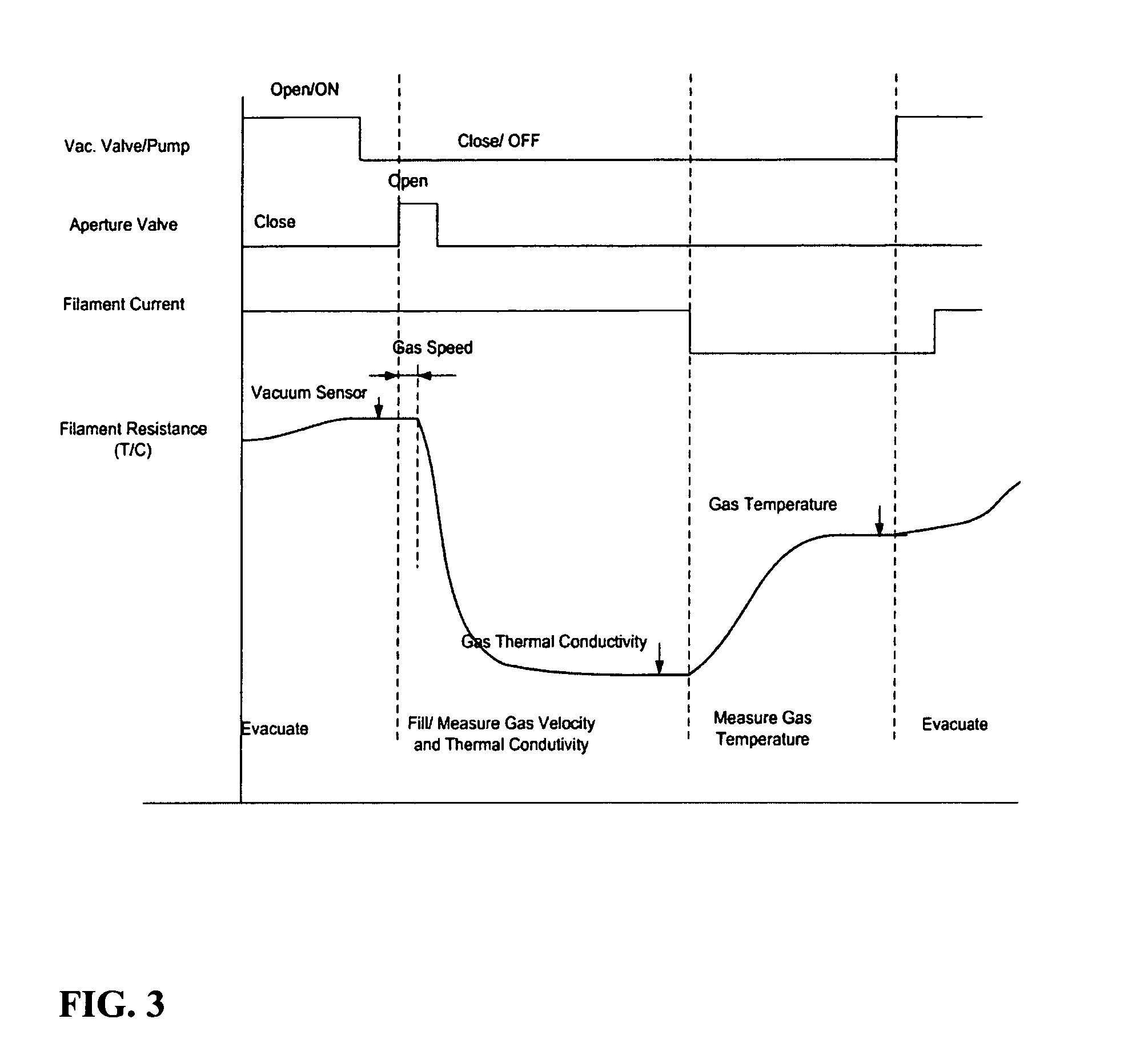Gas sensor based on dynamic thermal conductivity and molecular velocity
a technology of molecular velocity and thermal conductivity, applied in the field of gas sensors and detection methods, can solve the problems of inability to distinguish different gas mixtures having similar thermal conductivity, limited specific gas analysis based on thermal conductivity,
- Summary
- Abstract
- Description
- Claims
- Application Information
AI Technical Summary
Benefits of technology
Problems solved by technology
Method used
Image
Examples
example 1
[0042]A gas sensor according to the present invention was constructed using a 0.25 inch O.D. stainless steel tube approximately 1 meter long, with Swagelok (Swagelok Company, Solon, Ohio, USA) or equivalent pressure fittings for the thermal conductivity sensing element, aperture valve, and vacuum valve connections. A tungsten-rhenium filament from GOW-MAC Instrument Co. (Bethlehem, Pa., USA) was employed as the thermal conductivity sensing element. Such a filament has a positive temperature coefficient that is linear along the temperature range from room temperature to 800° C. The filament was connected to the stainless steel tube by means of a pressure seal in an arrangement similar to that shown in FIG. 2. A Wheatstone bridge circuit was connected to the filament to monitor voltage changes in response to changes in filament resistance. The sensor block was maintained at 250° C. during sample measurements, a temperature that maintains water vapor and other condensable components in...
example 2
Measurement of Thermal Conductivity
[0043]For a gas sensor constructed as in Example 1, the measurement of thermal conductivity relies on the fact that, when the current level through the metal filament is raised to or above the self-heating point of the filament, the resistance of the filament changes in proportion to the thermal conductivity of a gas sample that surrounds it. The equation defining the relationship between the thermal conductivity of the surrounding gas and the resistance of the filament is:
[0044]q=i2rJ(1)
where q=rate of heat loss, i=current, r=resistance, and J=joules equivalent (4.19 w / cal). Referring to FIG. 5, when a metal filament 48 and a reference filament 50 are connected to a Wheatstone bridge circuit, and a constant-current source (i) applied, small changes in the filament resistance cause bridge voltage changes that can be accurately measured.
[0045]At the start of each measurement cycle, a vacuum pump can be used to lower the pressure in the sample chamb...
example 3
Measurement of Temperature
[0046]For a gas sensor constructed as in Example 1, the resistance of the filament is a direct indication of the absolute temperature of the surrounding gas when the current level of the filament is lowered to below the self-heating level of the filament. The electrical resistance of a filament at any temperature may be calculated by the following equation:
RT=Rr[1+α(T−Tr)] (2)
where RT=conductor resistance at temperature T, Rr=conductor resistance at reference temperature Tr, and α=temperature coefficient of resistance at the reference temperature Tr
[0047]A gas sensor was constructed according to Example 1. The α value of the tungsten-rhenium filament was 0.00392 Ω / cm-K (Tr=20° C.), and Rr was 31.2 Ω. FIG. 7 shows a calibration curve for the filament of the gas sensor.
PUM
 Login to View More
Login to View More Abstract
Description
Claims
Application Information
 Login to View More
Login to View More - R&D
- Intellectual Property
- Life Sciences
- Materials
- Tech Scout
- Unparalleled Data Quality
- Higher Quality Content
- 60% Fewer Hallucinations
Browse by: Latest US Patents, China's latest patents, Technical Efficacy Thesaurus, Application Domain, Technology Topic, Popular Technical Reports.
© 2025 PatSnap. All rights reserved.Legal|Privacy policy|Modern Slavery Act Transparency Statement|Sitemap|About US| Contact US: help@patsnap.com



